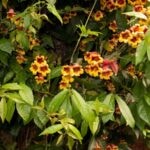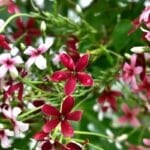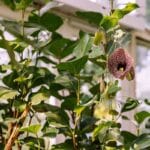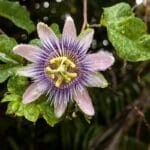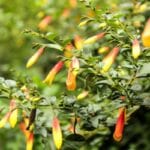The American bittersweet vine may not have showy flowers, but they give small but terrible flowers and berries that add a certain aesthetic to any landscape. In wanting this vine to be a part of a garden, there are a few things one must know to optimize its potential.
Read on to learn more about the American bittersweet plant and how to grow and care for it.
Botanical Information
The bittersweet vine, climbing bittersweet, staff vine, or bittersweet vine goes by the scientific name Celastrus scandens. It came from the Celastraceae family, which is commonly known as the Bittersweet family or Staff family.
Kelastros is a Greek word that means evergreen tree and is where the genus, Celastrus, originated. On the other hand, scandens translates to climbing. They were called bittersweet by the people in Colonial times due to their fruits’ flavor, which is bitter and sweet.
Spatial Distribution
As the American bittersweet vine suggests, it is a native of Missouri, Central, and Eastern North America and has naturalized in different areas due to its versatility. Since it is a versatile plant thrives in USDA zones 3 to 8. Also, these native plants are widely used as ornaments for different landscapes.
It favors various soil types in areas with enough exposure to sunlight, which is why it is seen in woodlands, forests, rocky slopes, dunes, old fields, and beaches.
Growth Habits
For the American bittersweet plant, the only way is up. It is a perennial climber with woody stems that bear leaves, flowers, and bright red berries for years. It can grow up to more than 20 feet in height, given the correct structural supports.
Although this vine loves to climb up, it can also crawl to the ground without support. Developing mature woody stems through the years is why this might impose some structural problems in the landscape.
Leaves
The American bittersweet produces foliage that is arranged alternately onto the stem. Each leaf is oval with pointed tips and extends from 2 to 4 inches in length and 1 to 2 inches wide. Moreover, its margins have a wavy or soft toothed edge. During fall, the vine’s dark green leaves turn yellow-green to yellow.
Flowers
The flowers on the American bittersweet vine’s leaf axils may sometimes dissolve into the background due to their dark yellowish green color and small size of about a fourth of an inch in diameter.
Fortunately, its flowers are formed in hanging clusters, making them pop out. Each flower has pale green petals, green sepals, and stamens with yellow anthers, with five of each. The petals also have jagged margins. The life span of each flower lasts for up to 2 weeks. May to June is the best months to see these flowers.
Fruit and Seeds
After the plant’s flower season, the plant gains more color because of its fruits. The fruit consists of an orange seed covering and bright red or red-orange flesh coating the seed.
They are often 8 millimeters in diameter, with the cover splitting into three parts showing the fleshy parts. Moreover, the seeds are white but turn brown upon drying. July to October is when these fruits are prominent.
It’s important to note that male and female flowers are required for the attractive berries to develop. The female plants produce the berries, but only if there is a male plant nearby to fertilize the flowers.
Female plants are 1 to 1.5 inches long with 1.25 to 2 inches long stalks, while male flowers are 2 inches long with an inch long stalk. In terms of stamens, the female flowers have underdeveloped stamens, while the males have their stamens shorter than the petals.
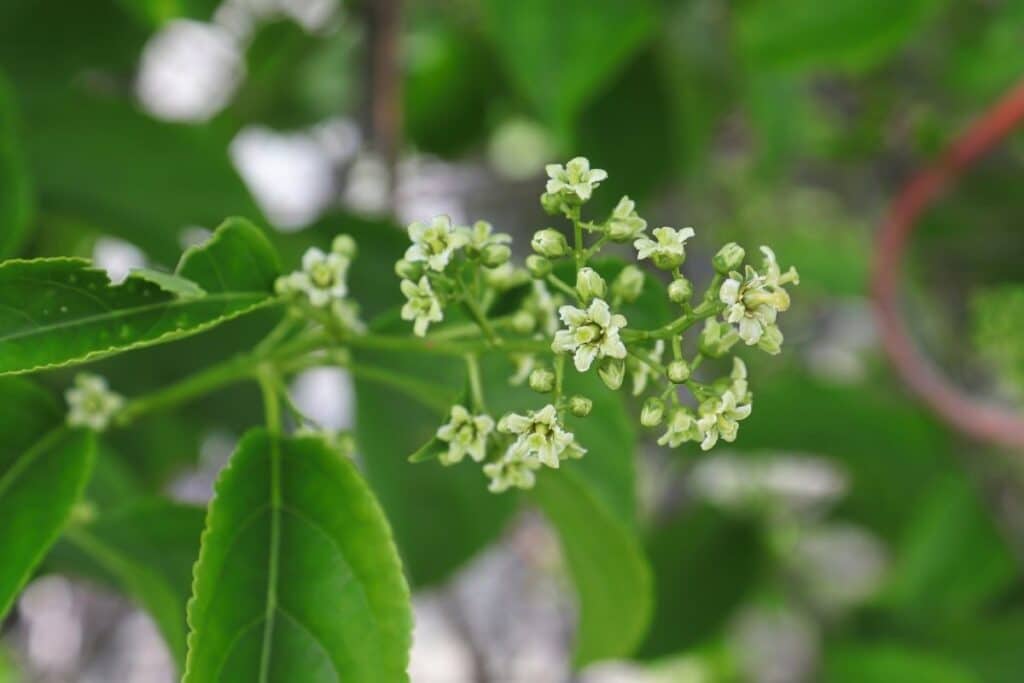
Grow and Care Tips
Sun Requirement
The American bittersweet flower loves a full sunlight exposure but also thrives in partially shaded areas.
Water Requirement
Average amounts of moisture are what this plant needs. It loves to have a moist environment but can also tolerate dry areas.
Temperature and Humidity
Since this bittersweet vine prefers exposure to full sun, it also favors warmer temperatures but tolerates cold temperatures as well.
Soil Requirement
A soil with good drainage, alkaline, rich in organic matter, and good water holding capacity is the best soil type for the American bittersweet vine. However, this plant is not sensitive to its environment and planting media, making it able to tolerate drought.
Fertilizer Requirement
Application of fertilizer is not necessary for this vine to flourish. The typical annual application of slow-release fertilizers in the landscape is enough for the American bittersweet vine to last for years.
Maintenance Activities
There are two main maintenance activities to be done: pruning and checking the integrity of the structural supports. Prune whenever necessary, which is usually in early spring, when the vine starts to crawl over unwanted places and other plants.
Also, the removal of diseased plant parts will bring wonders for the plant. In some gardens, flowers end up removed after they have lived their life span because seeds are unwanted. This activity is a way for them to control the unwanted spread of the plant.
Then, checking the state of the structural support is to be done regularly, especially for an aggressively growing woody vine such as this. There are cases wherein the plant became top-heavy to cause some damages to the support and surrounding structures.
These two maintenance activities go hand in hand. To prevent structural damages, trim customarily. On the other hand, if pruning regularly is too laborious, providing sturdy support that will help guide the vine to climb upwards and not towards other fixtures and existing vegetation is advised.
Propagation
Seed dispersal and separating sprouts are the main ways to propagate the American bittersweet plant. The spread of seeds is often aided by the wildlife attracted by its fruits, such as birds and small animals. The shelf life of the seeds is around a year. Therefore, it will be beneficial to sow them as early as possible after harvest.
On the other hand, there is new plant growth originating from the root crown. These may be separated carefully and planted in different areas. Some also practice stem cuttings.
With these propagation methods, it is best to provide extra care and caution while handling them until they develop a fully functional root system. Although, that will not take long due to this vine’s vast growth.
American Bittersweet Vine vs. Oriental Bittersweet Vine
The Oriental bittersweet vine is often confused with the American bittersweet vine. However, the Oriental bittersweet plant, Celastrus orbiculatus, is a native of East Asia and is invasive. Due to this potential harm that the Oriental bittersweet vine might cause, it is imperative to know the difference between them.
In terms of the foliage, the American bittersweet has gradually tapered leaf tips. The Oriental bittersweet vine has broader and shorter tips. Then, their flowers differ from the Oriental bittersweet having narrower and smoothly marginated petals. Lastly, the seed covering of the Oriental bittersweet is yellow, while orange is for the American bittersweet.
Function In The Landscape
Letting the C. scandens crawl to the ground will efficiently provide ground cover. When used as a groundcover, the vine can hide rock piles, tree stumps, or downed trees, giving animals important places to live and hide.
However, this function is unutilized in spaces where the users interact frequently. This is due to the vine’s stems becoming woody at maturity.
Also, this is why it is used as a vertical plant for green walls, fences, trellises, and arbors. It can provide a good shade and privacy screen in the landscape because of its broad leaves and fast growth.
Although, remember to plant it in places with reasonable distance from other infrastructures, trees, and shrubs where it may cause destruction.
As an aggressive grower, planting the bittersweet vine is accompanied by the responsibility of not letting it cause havoc. This vine may cause some structural damage and ecological disruption. These will likely happen when the plant is left unattended for long periods. Also, it will be hard to control the plant, but it is not impossible.
Extensive pruning is performed if the plant is to be kept in the landscape. However, if eradication is the goal, uprooting or application of the proper herbicides would be of help. Uprooting may be done for vines that are still in a controllable amount. However, when it becomes impossible to uproot one by one, apply triclopyr or glyphosate pesticides.
Remember to understand the label for the proper application and recommended rates for safe and effective use.
FAQs
Is American bittersweet fruit edible?
No, while the fruit of American bittersweet (Celastrus scandens) is not known to be highly toxic, it is generally considered inedible and can cause gastrointestinal discomfort if ingested.
How tall does American bittersweet get?
American bittersweet can grow as tall as 20 to 30 feet (6 to 9 meters) when supported by a structure such as a tree or fence. Without support, it typically remains shorter, sprawling along the ground.
Is bittersweet native to USA?
Yes, American bittersweet (Celastrus scandens) is native to the United States, primarily found in eastern and central regions, from Maine to Minnesota and south to Texas and Florida.
What is the difference between American and Chinese bittersweet?
The main difference between American (Celastrus scandens) and Chinese bittersweet (Celastrus orbiculatus) lies in their growth habits and fruit arrangements. American bittersweet plants produce fruits at the tips of their stems, while Chinese bittersweet has fruit clusters distributed along the length of its stems. Additionally, Chinese bittersweet is considered invasive in many regions of North America, whereas American bittersweet is native to the continent.
Check our blog for more varieties of vines to grow.
*image by Akchamczuk/depositphotos
References
Reference List:
http://www.missouribotanicalgarden.org/PlantFinder/PlantFinderDetails.aspx?taxonid=279117
https://www.maine.gov/dacf/mnap/features/invasive_plants/celastrus.htm
https://mdc.mo.gov/discover-nature/field-guide/american-bittersweet
https://mnfi.anr.msu.edu/invasive-species/OrientalBittersweetBCP.pdf
Close

